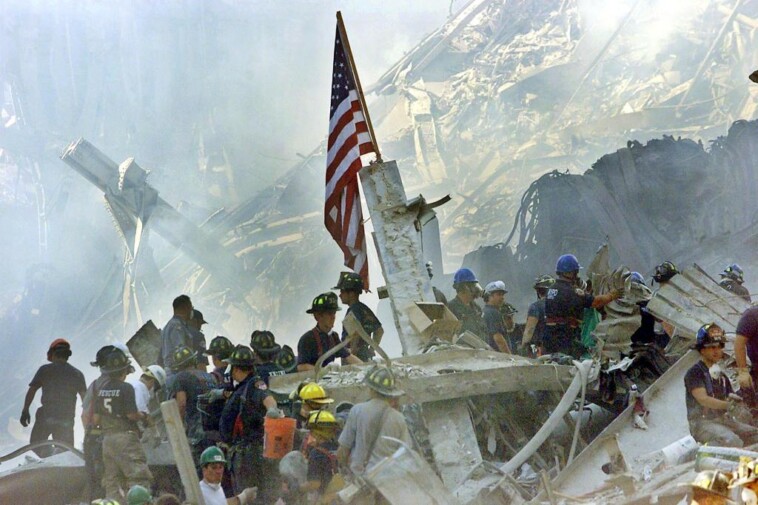There are still 1,103 victims of the Sept. 11 terrorist attacks in New York City who haven’t been identified despite ongoing efforts – leaving some families to search for peace in the face of the mystery.
Charles G Wolf, who spearheaded the September 11th Victim Compensation Fund compensation fund, said he does not expect his wife Katherine remains will ever be identified, part of the whopping 40% of the victims of that day where there’s been no match.
Wolf said he knew Katherine — who was on the 97th floor of the North Tower of the World Trade Center on the day of the attacks — was gone immediately when Flight 11 smashed into the skyscraper.
“It was gone. Just like that. I knew instantly, it was a twin-engine jet at full throttle,” Wolf told The Post.
The city Medical Examiner’s Office is still trying and making breakthroughs: in the last year alone, the dedicated team has developed 37 new DNA profiles thanks to major advancements in technology, but so far none have been matched to lost victims.
“This is not only the largest forensic investigation in the history of the United States, but it also the most difficult,” Mark Desire, the OCME’s Assistant Director, said.
Results have been slow.
The most recent positive identification came in January when officials used breakthrough DNA sequencing technology to match a profile to John Ballantine Niven, a new dad who was on the 105th floor of the South Tower at the time of the attacks.
Four months earlier, the office announced it had also identified the remains of a man and woman, but their names were not made public at the request of the family.
Roughly 7,000 human remains — some as small as the tip of a fingernail — have been sitting in the city’s possession for two decades waiting to be identified, but in most cases, technology is still too slow to break the case.
“The fragmentation, the jet fuel, the fire and the water and bacteria, sunlight, all those things destroy DNA. Everything was present at Ground Zero,” Desire, who was on the ground when the second tower collapsed, said.
In some cases, the experts are waiting for technology to advance further before they return to some of the samples. Plenty are so small that putting it through another round of testing could mean destroying the last remaining particle.
“Some of these fragments, you only get so many chances. So, we do know that instead of going and trying over and over again using the same modern techniques … When you’re dealing with smaller and smaller families, you know you may only have one shot left at this particular fragment, it gets very stressful,” Desire said.
The OCME is always on the hunt for new techniques — they are currently eyeballing genetic genealogy like 23 and Me, which uses the same technology that identified the Gilgo Beach victims.
Start your day with all you need to know
Morning Report delivers the latest news, videos, photos and more.
Thanks for signing up!
The office also has a trove of the unidentified victims’ personal belongings that they can cross reference for DNA, but Desire warns that there is a strong possibility not every victim will be identified.
Wolf believes his wife falls into that camp.
Katherine Wolf, an executive assistant at Marsh McLennan, was sitting at the fourth desk from the west window on the 97th floor — and the plane crashed through the 91st through 99th floors.
“I thought she was about probably 15 feet from what would have been the body of the aircraft, the wings — Fuel tanks are in the wings,” Wolf said.
“The percussive impact, the kinetic energy from that plane coming in, would have blown her body and everybody else’s body apart, and then the fire that erupted a couple of seconds later, when the explosion actually took place.”
Wolf dutifully collected several of his wife’s belongings, including her hairbrush, and handed them over to the OCME, but has lost hope over the years that any remains will be matched with her — nor does he want any to.
“We need to thank our lucky stars that our people didn’t have to suffer or make the decision to stay and burn to death or jump,” Wolf said while holding back tears.
“There’s nothing there. So I have felt liberated. And that is what that is. One of the big things that gave me peace is she didn’t know it happened.”
Wolf has even consulted with a close friend and medium, who he claims connected him with his lost wife beyond the grave: “She has verified to be she never felt a thing.”
Wolf is one of the few who have found closure in the unknown, something the OCME has not.
The team continues working on the case daily — and is on the other side of the hump.
Roughly 70 percent of the remains collected from the devastation have been matched to victims in the last 23 years.
That’s 1,650 victims whose families were able to bring a piece of their loved one home.
“We’re making identifications every year and we’ll continue to move forward and advance the science and come up with these great techniques to identify even more victims,” said Desire.
The unidentified remains, as well as remains that have not been claimed by relatives, were moved in 2014 to a 2,500-square-foot repository beneath the World Trade Center memorial in Lower Manhattan.
It is not open to the public, but includes a reflection room that allows the families of the victims to remember the lives of their loved ones.







